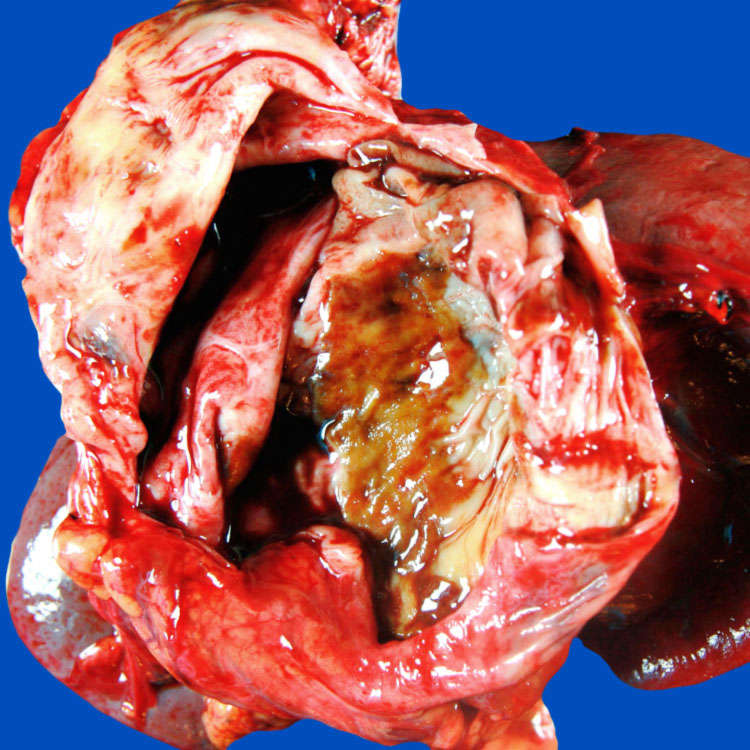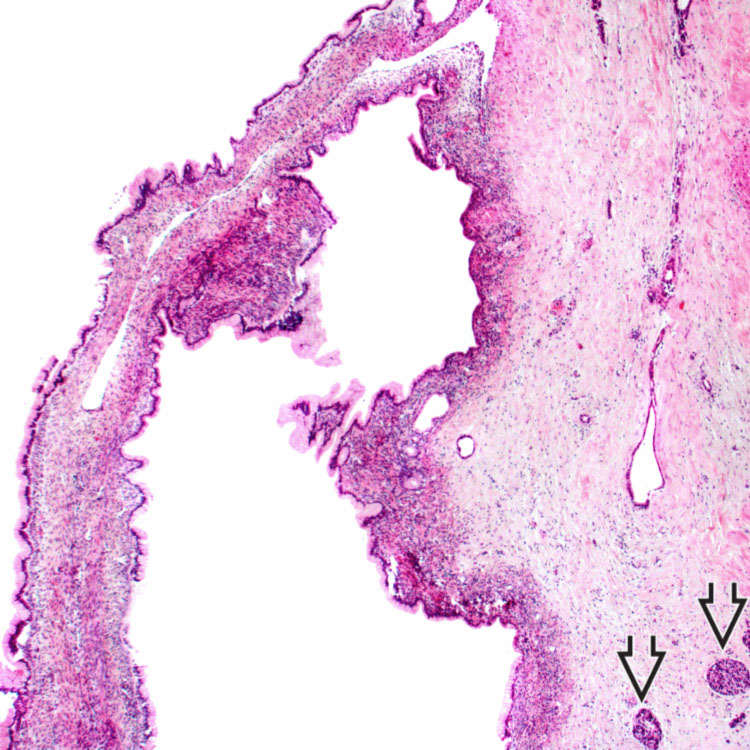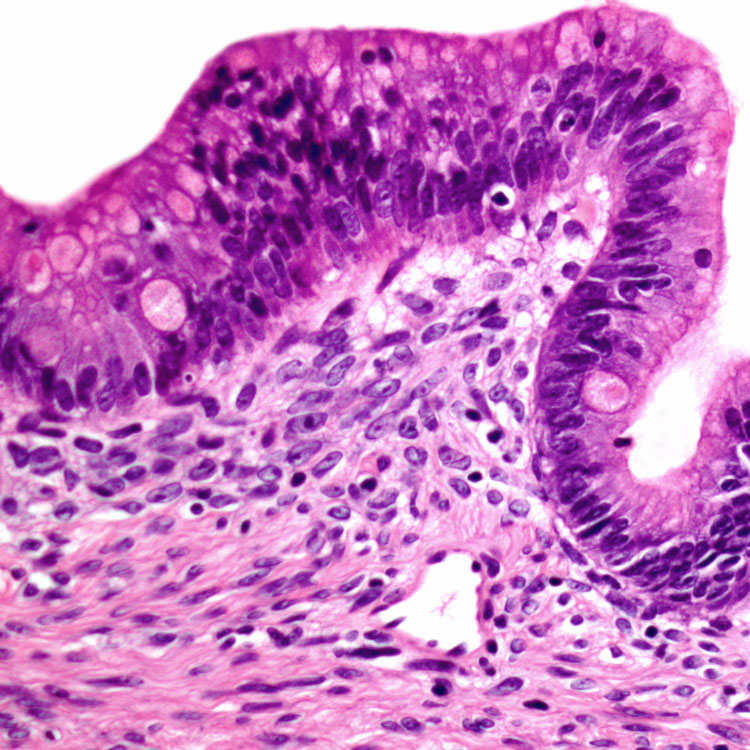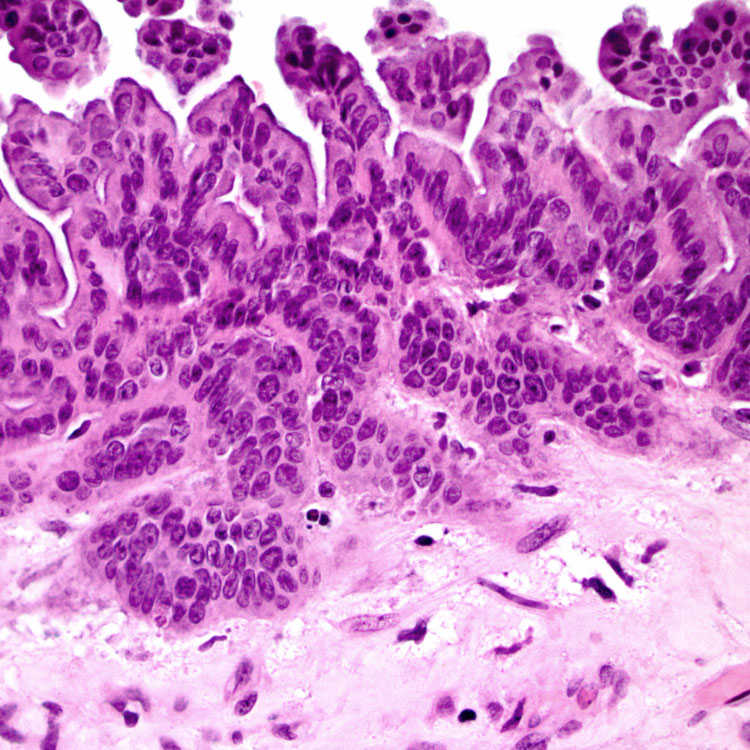Microscopic

Unilocular cyst with a smooth, partially discolored lining is shown located in the tail of the pancreas.

Cyst lined by tall, columnar mucinous cells with underlying ovarian-type stroma is shown. The adjacent pancreatic parenchyma is fibrotic with a few residual islets
 .
.
The lining epithelium shows enlarged, hyperchromatic nuclei with crowding and stratification.
IMAGING
CT Findings
• Usually large, well-demarcated, thick-walled, multilocular cystic mass with peripheral calcification (20%)
Stay updated, free articles. Join our Telegram channel

Full access? Get Clinical Tree












